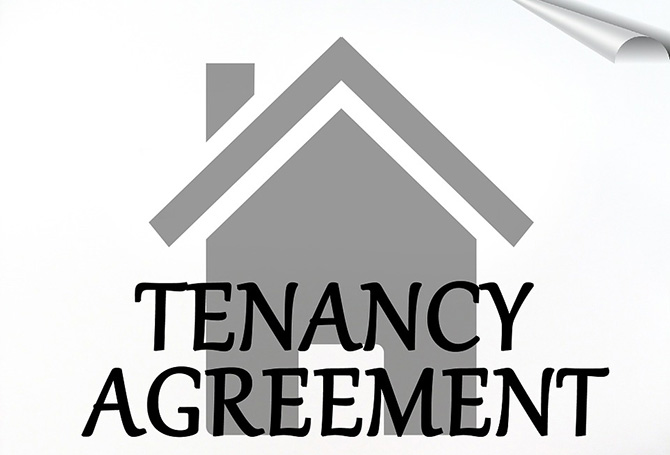Evicting a Tenant in Ontario
A Landlord’s Guide
Evicting a tenant in Ontario can be a long and stressful experience.
The resources available online to Landlords can be confusing and overwhelming. In addition, the limited resources that are available fail to explain fully the process of evicting a Tenant in Ontario.
This article is a Landlord’s guide to evicting a tenant in Ontario. It takes you through the entire eviction process, from serving the eviction notice to physically removing your Tenant from the rental unit.

The Process of Evicting a Tenant in Ontario
The process of evicting a tenant in Ontario is not easy. There is a common misconception that once the paperwork is complete, the Tenant needs to be out at the end of the month. This is incorrect.
At Sturino Walker Legal, we support you, the Landlord, throughout the entire process, ensuring everything is completed correctly and in the timeliest manner.
We’ve outlined below the process of evicting a Tenant in Ontario but would welcome the opportunity to discuss your specific matter with you, through our personalized service.
1. Can a Landlord Evict a Tenant for No Reason in Ontario?
There must be a valid legal reason for a Landlord to evict a Tenant. In some circumstances, the Landlord or Tenant talking to each other can resolve the issue or problem. If the conversation does not solve the problem or issue, the Landlord now has the choice to issue an eviction or compliance notice to the Tenant.
2) Legal Reason For Evicting a Tenant in Ontario
You have made the decision that you are going to issue an eviction or compliance notice to the Tenant. The form that you choose will depend on what has happened and what you want to happen. Our post 13 Reasons to Evict Your Tenant in Ontario outlines the most common reasons a Landlord would evict a Tenant.

The Notice that is provided to the Tenant must be an approved notice/form from the Landlord Tenant Board. We do not recommend using your own form.
3) Eviction Notice Ontario Form
The Landlord Tenant Board has forms that Landlords must use when trying to evict a Tenant. These forms outline all the necessary details for both the Landlord and the Tenant to understand easily. The Landlord Tenant Board’s website has all the required forms. For your convenience, please see below for the link to their website.

This is the most critical step in the entire process of evicting a Tenant in Ontario. If there is a mistake on the form/notice you give the Tenant your entire application can be dismissed once you get to court. Make sure that you fill out the notice/form correctly. If you don’t know what form to give your Tenant or would like to seek legal help, you can Request a Free Consultation, and we would be glad to assist.
4) Give Tenant Proper Notice
You have decided on what form/notice you are going to use to terminate the tenancy. You have started to fill out the Notice, and it is now talking about the termination date and amount of time that you have to give the Tenant.
This is extremely important. Each form/notice has its own specific rules regarding the amount of time you have to give a Tenant before you are allowed to evict them. Also, how you serve the Tenant with the form/notice can impact the termination date you use in your Notice. Make sure that you follow the rules and instructions for each form/notice, so your application is not dismissed, once you get to court.
5) Wait Period
Each form or Notice has a different wait period before you can file the application with the Landlord Tenant Board. Some forms, such as a N12 Notice, do not have a waiting period. Once the Tenant receives the N12 Notice, the Landlord can apply right away to evict a Tenant. Other forms, such as a N4 Notice, have a waiting period of approximately 14 days, depending on how you served the Tenant. Once that waiting period has elapsed, you can file your form with the Landlord Tenant Board.
6) File the Application With the Landlord Tenant Board
The application is the document that requests a court date with the Landlord Tenant Board. The application requires a Landlord to fill out more information about the tenancy agreement. This information helps the Board member better understand what is going on with the matter.
There are several types of applications that a Landlord can file, but the most common are the L1 and L2 applications. There are two ways a Landlord can submit an application; in person or online through the Landlord Tenants Board E-File. When filing the application, you have to provide a copy of your eviction form/notice and a certificate of service. A certificate of service is a Landlord Tenant Board form that explains how and when you served the Tenant with the eviction form/notice.
Once everything is filled out correctly and submitted, you now have to pay for the application to request your court date. If you file the application in person, it costs $190.00. If you submit the application online, it costs $175.00. Once the Landlord Tenant Board receives your payment, the Board will mail the Landlord a Notice of Hearing, letting them know of the court date.

How the Tenant Gets the Notice of Hearing
In the past, the Landlord Tenant Board required the Landlord to provide the Tenant with the Notice of Hearing. As you would imagine, there were some problems with that. Currently, the Landlord Tenant Board mails the Notice of Hearing to the Tenant directly.
7) Prepare Necessary Evidence
If the Landlord intends to rely on any evidence at the hearing, such as a picture or ledger, it must be prepared in advance. The Landlord needs to bring three (3) copies of his or her evidence. One copy is for the Member, one for the Tenant, and one for the Landlord. If the Landlord does not come prepared with three copies of their evidence, the Member may not allow the Landlord to use his or her evidence.
8) Attend the Hearing
The day has come where you have to attend the hearing. Let us take you through the seven (7) steps of the hearing process.
1. The Landlord explains why they are evicting the Tenant.
2. The Tenant can ask the Landlord questions about what was just said.
3. The Tenant tells their story why they should or should not stay.
4. The Landlord can ask the Tenant questions about what was just said.
5. The Member will ask questions to clarify concerns they may have.
6. The Landlord and Tenant will sum up their case and give a closing argument.
7. The Member will make a decision.

9) Obtain the Eviction Order
Once the hearing is over, the Member decides on the matter. This decision can be given orally at the Landlord Tenant Board, or the Member can reserve their decision. This means that a decision will be mailed out to the Landlord and the Tenant in the days to follow.
This decision will explain whether or not an eviction order was granted. If granted, it will explain the options the Tenant has and the date the Tenant must vacate the rental unit.
10) Tenant Refuses to Move Out of Rental Unit in Ontario
Although the Landlord has an eviction order, sometimes the Tenant refuses to move out of the rental unit in Ontario. If this is the case, we recommend trying to contact the Tenant to see if they are going to vacate the rental unit. The Landlord will find out quickly the intentions of the Tenant. The Tenant may require a few more days before they leave the rental unit, or they may intend for you to use the Court Enforcement Office (Sheriff) to enforce the eviction order.
Either way, a Landlord has to be prepared for this setback, as it is all too common.
11) Enforcing the Eviction Order
The Tenant decides to stay past the termination date set out in the eviction order. The Landlord now has the right to go to the Court Enforcement Office, known as the Sheriff’s office, to have the Tenant physically removed from the rental unit.
When the Landlord goes to the Sheriff’s office, they need a certified original and a copy of the eviction order. Once the appropriate paperwork is complete, and you have paid the fees, the Court Enforcement Office will schedule a week when the Sheriff will come to the rental unit, and remove your Tenant.
For the location of the Sheriff’s office closest to you, please review the online directory for court services and locations across Ontario.
Ontario Courts & Sheriff Office Addresses

Landlord Legal Services in Ontario
Hiring a Landlord legal service in Ontario is always the right decision. They are in court daily and understand what needs to be done to evict your Tenant successfully. Commonly, that legal service provider will take care of the entire process for the Landlord. Our article Landlord Legal Services in Ontario goes into more detail on what you can expect.
Sturino Walker Legal Services takes care of all the paperwork, serves the Tenant, files the applications with the Landlord Tenant Board, and attends court on the Landlord’s behalf. They talk with the Tenant, not you.
How Much Does It Cost to Evict a Tenant?
The cost to evict a tenant will vary depending on the amount of work that needs to be completed. Sturino Walker Legal Services does not charge an hourly rate. They charge a block fee, which is a fixed rate to complete all the necessary work on the file.
Common Questions About the Process of Evicting a Tenant in Ontario
We hope that our Landlord’s guide to evicting a tenant in Ontario is helpful and answered a lot of your questions. Below, you will find some common questions we receive from Landlords about evicting a tenant.
Can a Landlord Terminate a Month to Month Lease in Ontario?
Yes. If a tenant is on a month-to-month lease, a Landlord can terminate the tenancy if they have the legal grounds to do so. Our article 13 Reasons to Evict Your Tenant in Ontario explains the legal reasons a Landlord can evict a tenant.
How Long Does it Take to Evict a Tenant in Ontario?
Evicting a Tenant in Ontario takes approximately 131 days. On average, this is the wait time we have seen for our clients. The waiting period for a court date varies depending on the region. For more information, we recommend requesting a consultation with our office to discuss your matter in depth.

Can You Evict a Tenant in the Winter?
Yes. The time of the year, and the weather, is something a Landlord does not need to take into consideration. A Landlord Tenant Board member will issue an eviction order regardless of the time of year.
Can a Landlord Lock a Tenant Out of the Rental Unit?
No. It is illegal for a Landlord to lock a Tenant out of the rental unit. If the Landlord needs to change the lock on the rental unit, they may do so. Once complete, the Landlord must provide the Tenant with a new key to access the rental unit.
Can You Evict a Tenant Without a Lease in Ontario?
Yes. While a lease should be in writing, sometimes that does not always happen. To create a Landlord Tenant relationship, the Tenant must provide a form of payment to the Landlord for the use of the rental unit. Once this happens, a verbal lease is established. At this point, a Landlord can evict a tenant without a lease in Ontario.

Landlord Tenant Board Ontario
At times, the Landlord Tenant Board in Ontario can be very complex to navigate. We have included some additional Landlord resources and contract information regarding the Landlord and Tenant Board below.
Contact Information:
Website: www.sjto.gov.on.ca/ltb/
Phone: 416-645-8080 or Toll-Free 1-888-332-3234
In Person: You can attend the Landlord Tenant Board in person to seek answers to your questions. Their locations can be found on their website HERE.
Resources for Landlords:
Social Justice Tribunals Ontario
Landlord Tenant Board Website
Ontario Government Website
Renting in Ontario
Landlord Legal Services
Sturino Walker Legal
Related Articles:
- 13 Reasons to Evict Your Tenant in Ontario
- Evict A Tenant for Not Paying Rent Ontario
- Evict A Tenant For Personal Use Ontario
- Landlord Legal Services Ontario
Get Expert Help with Landlord Tenant Issues—Free Consultation
Whether you’re a landlord dealing with a difficult tenant or a tenant facing unfair treatment, understanding your legal obligations is crucial. Our representatives are well-versed in Landlord and Tenant Board proceedings. Schedule your free consultation now and let us help you resolve your dispute efficiently.


12 Response(s) for “Evicting a Tenant in Ontario – A Landlord’s Guide”
I am a landlord want to evict the tenant of house for no payment of rent as of Apr first . Property is in waterloo. Tenants was using the property as airbnb with my consent. She continued the same even during the pandemic . What will be the bulk cost to evict the tenant.
Hello Wagby, we would be happy to assist you. Please give our office a call to book a free consultation. Thank you.
Hello,
I have a question, if a date is set by the sheriff’s office to remove a tenant, will the tenant be informed before this date, so they may have time to leave on there Own?
Hello Dale, yes the Tenant will be informed by the Sheriff’s Office.
If I’m buying a tenanted property, what is my responsibility to the tenant property? Are they required to vacate the premises prior to my possession?
Hello Steve, we would be happy to assist you. Please give our office a call to book a free consultation. Thank you.
I wish to buy a condo to live in that is currently occupied by the sellers tenant Am I able to do that and approximately how long is the process and the fee
Hello Stephen, we would be happy to assist you. Please give our office a call to book a free consultation. Thank you.
I am planning to move in and a my tenant is requiring an N12 and one month’s rent, and has agreed in our DM correspondence that she will vacate the unit by the required date. Do I need to provide any other documentation to the tenant (indicating that DM conversation), alongside the N12?
Hello Dee, we would be happy to assist you. Please give our office a call to book a free consultation and we can answer all your questions. Thank you.
Can a landlord email the tenant about the rent payment reminders after the LTB process is initiated? What is the legal process?
Hello Kauser, we would be happy to assist you. Please give our office a call to book a free consultation and we can answer all your questions. Thank you.